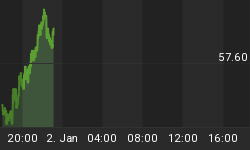Here is an extract from commentary posted at www.speculative-investor.com on 10th July 2003:
As far as our longer-term (12 months or longer) views are concerned it is usually possible for us to lay out in clear, concise terms, what we think is going to happen and why it is going to happen that way. However, when it comes to the shorter-term stuff our level of uncertainty is typically greater. This is because the shorter the time frame the more random the market movements tend to be (on any given day it is often difficult to distinguish the 'signal' from the 'noise'), and also because the financial markets are extremely deceptive. In particular, on a day-to-day, week-to-week or even month-to-month basis, the markets will usually behave in a way that prevents most market participants from understanding the big picture. As such, during long-term bear markets there are enough rallies of sufficient magnitude to keep hope alive most of the way down, and during long-term bull markets there are enough gut-wrenching pullbacks along the way to keep most participants, even the correctly bullish ones, from fully committing to the uptrend.
For the reasons laid out in detail in many commentaries over the past 3 years, we are confident that the gold price is headed MUCH higher and that the major US stock indices are headed MUCH lower. And, as each month goes by the evidence that these views are correct continues to pile up. However, the gold and stock markets are doing a very good job at the moment of concealing how they are going to get from where they are now to where we expect them to be in 12 months time.
The fact that the paths to be taken by both the gold and stock markets over the next few months are less than clear is not surprising because all the major markets (stocks, bonds, currencies, gold and commodities) are inter-related. In other words, the firmer our grip on what is going to happen with the gold market over the next 3 months the better our chances of figuring out how the stock market drama is going to play out over the same period. Fortunately, although we can't know exactly how the gold market's correction is going to unfold and, therefore, when the next leg in gold's bull market is going to begin, we have been able to establish some guidelines. These are:
1. From a seasonal perspective, the most likely times for a low in the gold price are July-August and October-November.
2. The rally in the US$ shows signs of being shallow and short-lived, suggesting that a major downturn in the gold price is not on the cards.
3. At the recent peak in the gold market the small traders did not have a large net-long position in gold futures, meaning that there were not a lot of weak hands in the market.
Taken together, the above suggest that the gold price will reach its correction low over the coming month or so and that this next low will be above the previous low (reached in early April when spot gold traded down to around $320). Also, given gold's cyclical tendencies a reasonable assumption is that there will be a low in August and another (higher) low in October-November.
We are now going to do our best to avoid creating more confusion while throwing some more potential scenarios your way.
There is a tendency for the S&P500/gold ratio (the S&P500 Index measured in terms of gold ounces) to reach important peaks at around the same time as, or before, the gold price is making an important low. Therefore, if our gold market view is close to being correct then regardless of what happens to the nominal S&P500 Index, the S&P500 Index in terms of gold is likely to have peaked by the time the gold price reaches its next correction low. That is, even if the S&P500 Index continues to rally for several more months (something we don't expect, by the way) the S&P500/gold ratio is likely to peak some time between now and the end of August.
The below chart compares the S&P500/gold ratio with the gold price over the past 5 years and shows projections based roughly on what we've discussed above. As far as the stock market is concerned, these projections show what we consider to be the most bullish outcome. An equally likely alternative to the outcomes illustrated on the below chart is that the next low in the gold price will be followed by a rally to a new high for the year (as opposed to the on-going consolidation shown on the chart). In this scenario, a July-August peak for the S&P500/gold ratio would be followed by a major decline rather than the extended topping process represented on the chart.

As an aside, the above chart shows an Elliott Wave (EW) interpretation of the action in both the S&P/gold ratio and the gold price over the past 4 years. Our experience has been that EW analysis has little value as a standalone forecasting tool, but it can be very useful in explaining what has happened in the past. Furthermore, it can also be used to explain what is likely to happen in the future in those situations where one has already developed a high-confidence view via non-EW methods. We certainly do have high-confidence views regarding the longer-term outcomes for the gold and stock markets and have, on the above chart, shown how an EW analysis would mesh with these views.















